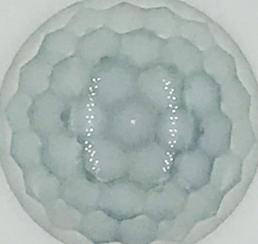There are many motion-sensitive solutions in the market. They help save energy bills when with dim to off when no absence, and also keep safe for the house when anyone reaches. Motion-sensitive solutions bring convenience and help a lot in our lives. Most sensors in the market work in 2 ways: PIR defection and Microwave detection. Do you really know how to choose the right sensor?

What are PIR sensors?
PIR sensors are “passive infrared” sensors, receiving the heat source passively. They usually come with special lenses, which have many slots.
When a heat source comes in the sensor detective range, one slot receives over heat than the other slot does, and the PIR sensor is triggered and turns on the luminaire.
When the heat source leaves, all slots receive the same heat, the PIR sensor will resume and turn off the luminaire.

What are Microwave sensors?
Microwave sensors emit microwave signals actively and constantly.
When there are absence in the sensor detective range, microwave signals are reflected back to the sensor, which is triggered and turns on the luminaire.
When the absence disappears in the sensor detective range, the sensor returns to normal and turns off the luminaire.
As you can see, both PIR sensors and Microwave sensors are motion-sensitive sensors, there is no direct advantage or disadvantage for both sensors, their working ways make them applicable for different occasions.
How to choose the right sensor?
PIR sensors are sensitive to heat, they need to detect the temperature difference between the heat source and the environment, so PIR sensors are not suitable for areas or places that are hot, such as oven areas in food processing factories, and metal processing areas. While microwave motion sensors will not be affected by temperature.
PIR sensors are triggered by heat, so the suitable location is where the target can be detected, such as corridors, entries, walkways, etc. However, microwave sensors do not need the sight of movement, therefore it will be good for large rooms, such as factories, and warehouses with a lot of obstacles.
Important things for microwave sensors,
- Over sensitive: be careful with metal devices, such as large machines, metal roofs, shelves, etc. Sometimes, microwave signals would be reflected by these metal surfaces, so sensors become over-sensitive, which makes luminaires glimming.
- Under sensitive: some microwave signals cannot go through glass and walls, so these obstacles will make the sensor under sensitive.
- Others: microwave sensors may be affected by blowing leaves or waving branches, these should be considered when using them outdoors.
Consult with AGC first before you choose a sensor, we will give some professional suggestions to avoid your future trouble after mounting.












